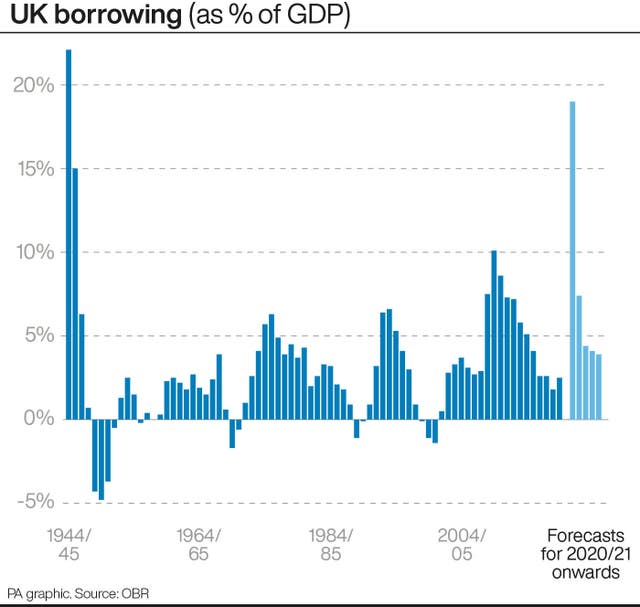
Ben Kentish 10pm - 1am
25 November 2020, 16:14

The Office for Budget Responsibility predicted government borrowing will soar to £394 billion this year.
Britain’s economy will suffer the biggest plunge in output for more than 300 years and government borrowing will balloon to a peacetime high of £394 billion, the fiscal watchdog has warned.
The Office for Budget Responsibility (OBR) said £218 billion of government support to help the economy through the pandemic will see borrowing soar to the equivalent of 19% of gross domestic product (GDP) in 2020-21.
The borrowing marks the highest level in Britain’s peacetime history and a significant hike on the £372.2 billion forecast by the OBR only three months ago.
Britain’s government spending hike – the second biggest of the world’s advanced economies – will leave UK public sector debt at 105% of GDP, which is the highest level since 1959-60.
In a grim set of forecasts, the OBR warned the economy is not expected to return to pre-pandemic levels until the end of 2022, while unemployment will peak at 2.6 million after furlough support ends next spring.
GDP is predicted to plummet by 11.3% in 2020 – the largest annual fall since 1709, the year of the Great Frost.
And the OBR said a no-deal Brexit would inflict yet more damage on the economy, wiping around 2% off GDP and adding another £10 billion of borrowing.
The 2020 GDP outlook marks an upgrade on the OBR’s economic forecast in July, when its central scenario saw a 12.4% tumble this year.
It also predicts GDP will start growing from next year, up 5.5% in 2021, 6.6% in 2022 and 2.3% in 2023.
But Chancellor Rishi Sunak warned the economic damage is likely to be lasting, with the economy around 3% smaller in 2025 than expected in the March Budget.

The OBR’s economic and fiscal outlook also gave a gloomy outlook should a vaccine not be effective, with a worst-case scenario showing long-term lost output of 6% and the economy not recovering until 2024.
It said the second national lockdown would dent GDP in November and the fourth quarter, but the size of the hit would depend on the restrictions that follow.
The OBR said the impact would be less than in the first lockdown, with the fall in GDP expected to be three-fifths that seen during the original lockdown, though it will still leave output 15% lower than before the crisis.
OBR chairman Richard Hughes said: “The economy has confronted two national lockdowns and it has withstood them, but obviously with considerable economic pain on the sectors concerned and pain for everyone’s economic lives.”
The OBR also warned the UK faces an uncertain economic outlook.
It said: “The economic outlook remains highly uncertain and depends upon the future path of the virus, the stringency of public health restrictions, the timing and effectiveness of vaccines, and the reactions of households and businesses to all of these.
“It also depends on the outcome of the continuing Brexit negotiations.”
The OBR predicted £20 billion to £30 billion in spending cuts or tax rises would be required to balance revenues and day-to-day spending and stop debt from rising by the end of the current Parliament.
Samuel Tombs, an economist at Pantheon Macroeconomics, said: “The OBR’s new forecasts for public borrowing are eye-wateringly high, and likely understate the scale of the necessary future fiscal consolidation.”